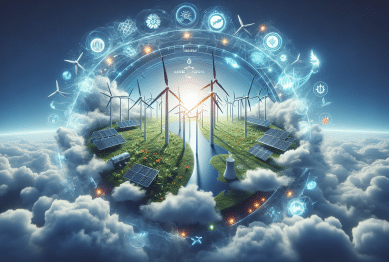Extreme weather events grab media attention and affect millions. This article explores how climate news makes its way to your screens, why it feels more urgent than ever, and the ways headlines about storms, droughts, and wildfires shape public understanding. Learn how data, forecasting, and reporting trends combine to keep climate change in the breaking news cycle.
How Extreme Weather Becomes Breaking News
From hurricanes to heatwaves, extreme weather rarely stays out of the spotlight. When meteorologists notice a major storm forming, their updates quickly filter to newsrooms. Editors assess severity: is this flood historic? Could a wildland fire put communities in danger? Initial alerts are shared based on official bulletins—often from government agencies and leading climate research centers. As information builds, stories change rapidly. Headlines adapt to reflect what’s unfolding, adding real-time impact for readers searching for urgent news.
What makes these events newsworthy is not just their force. Location, population, and disruption matter too. Hurricane warnings in densely settled areas drive immediate coverage because viewers want actionable information on evacuation and preparedness. Reporters connect with scientists and local officials to gather reliable updates. The cycle intensifies as images emerge. Satellite photos, video clips, and on-the-ground interviews make the threat tangible. It’s a blend of science and storytelling aimed at helping communities make sense of what’s coming next.
Increasingly, climate change is layered into storm reporting. Phrases like ‘record-breaking heat’ or ‘once-in-a-century floods’ grab attention. Experts in climatology explain why events seem more frequent or intense. Data visualizations—such as temperature maps or rainfall projections—reinforce these claims. This connection between extreme weather and news coverage keeps the public engaged, driving interest in how global trends manifest locally.
The Science Behind Headlines: Forecasting and Communication
Science anchors every major weather news story. Meteorological agencies, such as the National Weather Service and national meteorological centers, release data-driven forecasts using satellites, radar, and climate models. Journalists rely on these official reports to guide their coverage. Real-time alerts about potential tornadoes, droughts, or blizzards serve as the backbone for news headlines. Effective communication becomes crucial, as misinterpretation can fuel unnecessary panic or minimize genuine risks. Reporters are tasked with explaining complex meteorological terms in clear, understandable language for the general audience.
Visualizations play a major role. Forecast maps, animated radar, and projected storm paths give context beyond words. When headlines include phrases like ‘record-setting’ or ‘unprecedented,’ they often originate from these data comparisons with historical records. Experts are frequently quoted to break down what the numbers mean—was this the hottest summer ever recorded? Are recent wildfires larger and more destructive than in past decades? Such comparisons help readers understand why an event is newsworthy and what the implications could be for public safety and preparedness.
Climate scientists also inform coverage. They highlight how patterns shift due to global warming, connecting dots between local events and worldwide climate trends. Peer-reviewed research, summaries from organizations like the Intergovernmental Panel on Climate Change (IPCC), or studies published in respected journals, are evaluated and referenced to provide authoritative background. This synthesis of forecasting and research ensures extreme weather news is rooted in the latest science, not just attention-grabbing visuals.
Public Response and the Influence of Weather Headlines
How do people react to weather headlines? Often, it’s deeply emotional. Seeing dramatic footage of flooded neighborhoods or blazing wildfires prompts concern for loved ones and property. Social media amplifies the spread of images and stories. Hashtags make it easy for individuals to share experiences and follow updates from different regions. The combination of immediacy and visual storytelling drives high-volume search trends for related topics: evacuation routes, power outages, shelter locations, and how to donate to relief efforts.
The immediate impact of breaking weather stories is measurable. Web traffic spikes, emergency apps see increased downloads, and charitable organizations receive donations in the wake of headline news. The ripple effect extends to local governments and emergency services. News coverage can motivate public agencies to issue real-time updates, clarify misinformation, and share best practices for safety. This has become especially vital as climate-related events grow more frequent and intense, creating a feedback loop of preparedness and awareness.
Yet there is a risk of headline fatigue. When storms, fires, or heatwaves dominate the news cycle for extended periods, audiences may experience information overload or anxiety. Media outlets attempt to balance urgent updates with positive stories—profiles of resilience, scientific innovation, or community rebuilding. This more nuanced reporting builds trust while keeping readers informed about both immediate risks and long-term solutions. Finding the right balance is key for credible news organizations in a landscape shaped by fast-breaking, high-impact weather events.
Spotting Trends in Reporting: What Makes Certain Stories Go Viral
Some weather stories capture international attention, while others fade quickly. Virality depends on several factors: uniqueness, visual appeal, and timing top the list. A hurricane landfall or rare blizzard in an unexpected location draws global interest. Reporters highlight personal narratives—how individuals and families adapt, survive, or help neighbors. These human-interest elements, combined with photos and dramatic video, make stories relatable beyond statistics or forecasts. Trending keywords and hashtags boost visibility on Google and social platforms, increasing engagement and the story’s reach.
The speed of information sharing has accelerated with digital technology. Live blogs, push notifications, and quick-turnaround news videos keep audiences engaged as situations evolve. Newsrooms monitor user data to identify which headlines are generating the most engagement. This feedback loop informs editorial decisions—should a wildfire update receive more coverage? Are there new developments requiring immediate follow-up? Social listening tools, like Twitter Trends and Google News dashboards, help journalists spot rising topics that may signal broader public concern.
Trends also emerge in how information is presented. Interactive graphics, explainer articles, and Q&A pieces rank highly in search because they address what people want to know in critical moments. FAQs and step-by-step preparedness guides remain evergreen content, resurfacing when similar threats return. The formula behind a viral weather story: timely, accurate information paired with actionable advice and empathetic storytelling. As news cycles shorten, the demand for clarity, relevance, and accessibility only grows.
The Role of Government and Science in Shaping Climate News
Behind every weather warning or headline sits a framework of public policy and science communication. Agencies like the World Meteorological Organization and the National Oceanic and Atmospheric Administration invest in forecasting infrastructure, climate observation, and community outreach. Their mission goes beyond issuing alerts—they translate raw data into guidelines for families, businesses, and emergency responders. Academic researchers share studies that reveal long-term trends, helping journalists to connect breaking news with climate change’s bigger picture.
Policy responses are increasingly influenced by media coverage. When catastrophic floods or hurricanes dominate headlines, lawmakers are often prompted to consider stronger building codes, improved emergency protocols, or investments in climate resilience. Media reports may highlight gaps in preparedness or spotlight community vulnerabilities, aiming to drive meaningful action. Partnerships between scientists and the press are essential for accuracy, especially when technical topics—like air quality advisories or wildfire risk metrics—enter public debate.
Efforts to educate the public include interactive online platforms, televised weather briefings, and multilingual alerts. During disaster scenarios, collaboration between local media, national agencies, and citizen scientists ensures that critical updates reach everyone, regardless of location or background. The ongoing relationship between government, science, and journalism forms the backbone of reliable climate news and empowers communities to adapt to changing realities.
Looking Ahead: How Weather Reporting Is Evolving
As technology evolves, so does the way extreme weather is reported. Advances in satellite technology, data analysis, and mobile journalism allow for real-time updates from even the most remote regions. Journalists now use drones for aerial imagery, livestreams for on-the-ground reporting, and artificial intelligence for rapid data sorting. These advancements result in more precise, timely coverage—especially vital for regions with historically sparse monitoring.
New platforms are changing how audiences consume weather news. Social video, podcasts, and text alerts provide flexible ways to receive information. Fact-checking organizations help combat misinformation, while collaborations with local experts increase trust. As global climate patterns continue to shift, the need for reliable reporting and accessible data is greater than ever. Newsrooms rise to the challenge, experimenting with new formats designed to inform, engage, and reassure readers, no matter where they live.
Ultimately, the future of weather reporting lies in blending accuracy with empathy. Stories will increasingly feature voices from affected communities, alongside the expertise of climate scientists and public agencies. By spotlighting both solutions and challenges, journalism plays a pivotal role in guiding society’s response to our planet’s evolving weather patterns. Search volume for phrases like ‘storm tracker,’ ‘drought severity,’ and ‘climate change impact’ is likely to remain high as people everywhere seek clarity in uncertain times.
References
1. National Oceanic and Atmospheric Administration. (2023). Understanding Weather Events. Retrieved from https://www.noaa.gov/education/resource-collections/weather-atmosphere/weather-events
2. Intergovernmental Panel on Climate Change. (2022). Sixth Assessment Report: Impacts, Adaptation and Vulnerability. Retrieved from https://www.ipcc.ch/report/ar6/wg2/
3. World Meteorological Organization. (2023). Climate Monitoring and Information Sharing. Retrieved from https://public.wmo.int/en/our-mandate/climate
4. The New York Times. (2023). How Weather News Drives Search and Public Engagement. Retrieved from https://www.nytimes.com/2023/08/14/climate/weather-news.html
5. Pew Research Center. (2022). Americans’ Perspectives on Extreme Weather and Media Coverage. Retrieved from https://www.pewresearch.org/science/2022/08/18/americans-perspectives-on-extreme-weather-and-media-coverage/
6. Journal of Applied Meteorology and Climatology. (2022). The Role of Media in Extreme Weather Communication. Retrieved from https://journals.ametsoc.org/view/journals/apme/61/3/A21-0950.1.xml









